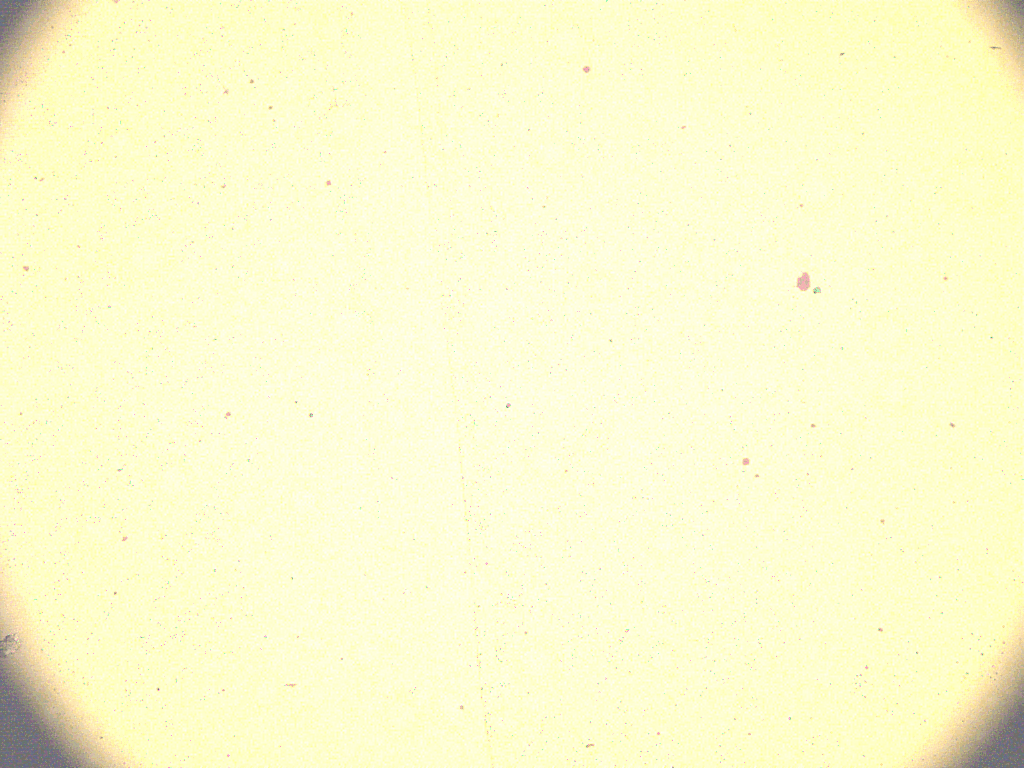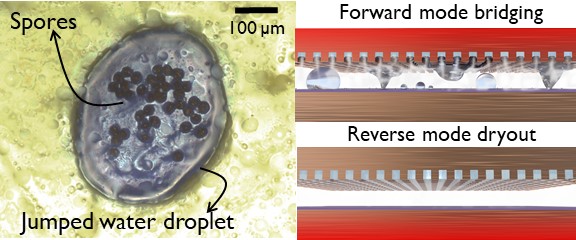Condensation and Evaporation
When two or more micrometric droplets condensing on a superhydrophobic substrate merge, the coalesced droplet jump out of plane. 10 years after its discovery, we now know that such jumping droplet-condensation is thermally more efficient than regular dropwise condensation. As such out-of-plane jumping departures of the droplets is independent of the gravity, the effect of surface orientation has never been formally studied. Here we have shown through extensive experiments and theoretical analysis that even the jumping-droplet condensation is not immune to gravitational orientation for longer periods of condensation (more than 3 h). The result is degradation of heat transfer efficiency with time, for non-vertical surfaces. You can read the story here.
Wheat leaves have micro and nanostructures rendering them superhydrophobic with a very low hysteresis (about 4°). When dew droplets form on the wheat leaves, coalescence of these droplets can launch them out of the leaf plane (Look at this excellent study). For a diseased leaf (Wheat rust, P. triticina), the jumped droplets can also carry the micrometric spores. This, in turn, can spread the disease between plants if the horizontal range of the spore-laden droplets are enough. To find to what extent jumping-droplet condensation contribute to disease spreading in wheat, we performed condensation experiments in the lab with and without wind. If the wind speed is just enough, it can significantly increase the range of a spore-laden jumped droplet without affecting the dew formation on the leaves. This establishes jumping-droplet condensation as an abiotic disease spreading mechanism along with wind and rain splash. You can read the story here.
Thermal diodes are devices used to transport heat in preferentially one direction. Phase-change thermal diodes have greater thermal efficiency compared to other thermal diodes due to the involvement of latent heat. But they generally suffer from either geometric constraints (1D) or dependence on gravity or low durability (e.g., jumping-droplet thermal diode). Here, a novel bridging-droplet thermal diode is proposed which is simple in design, durable and efficient with maximum orientation-independent heat transfer ratio reaching ~80%. Link for paper

